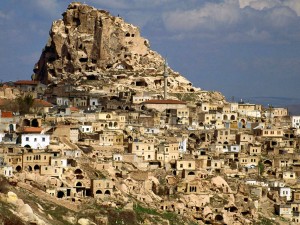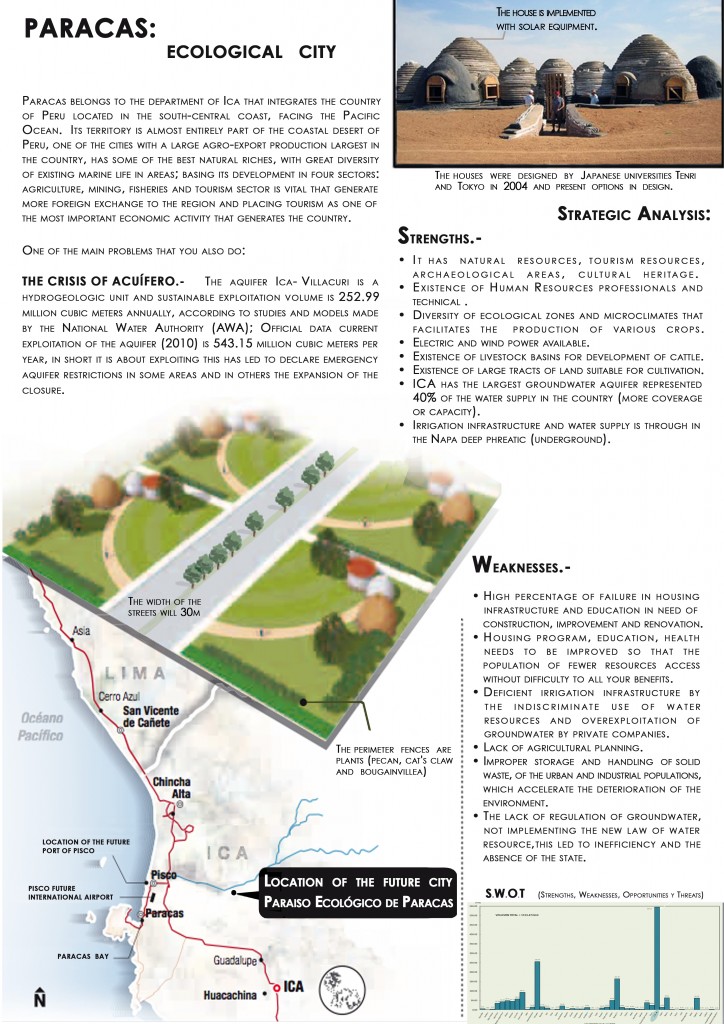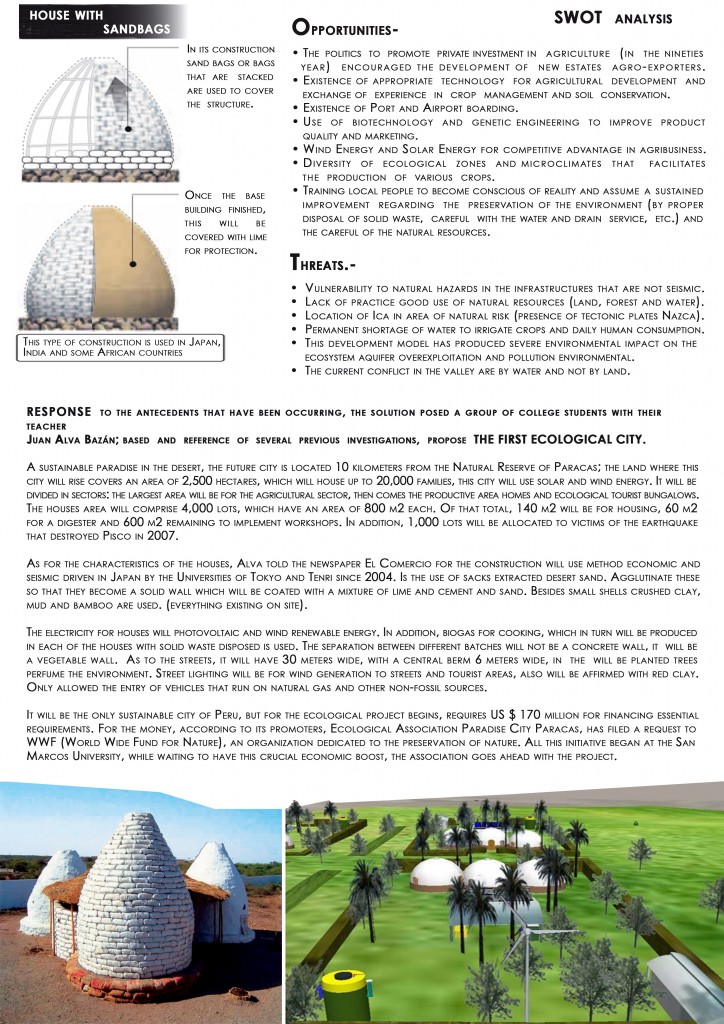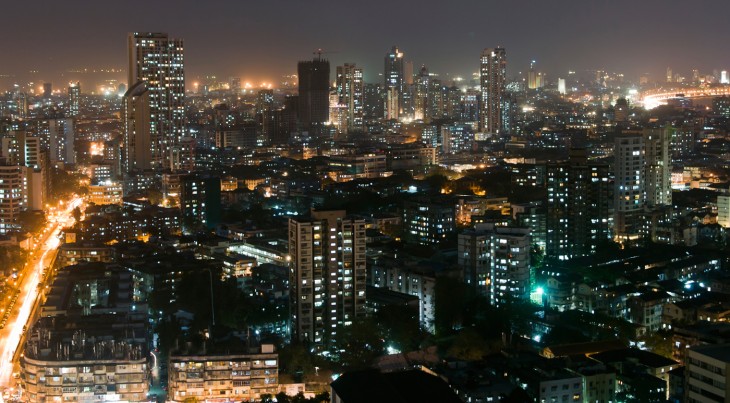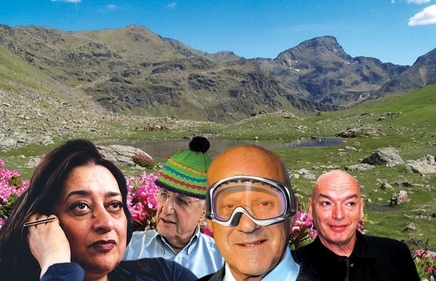
Source: http://www.mimaristil.com/etiket/dunyaca-unlu-tasarimci
The economic and social crisis that has plunged the Western world, and that has been manifesting in a severe way the last years in southern european countries, has highlighted several issues, neoliberal recipes do not always provide a solution for crisis, by contrast, they catalyze it. Austerity policies in a context of recession and unemployment only deepen and prolong the crisis, ensuring the returns of financial capital and the payment of public debt that is even fictional, because the debt is with their own central banks.
In 1999, Ecuador spent billions of dollars of the public for what we call bank bailout, the largest confiscation of private money in the country’s history, pushing hundreds of thousands of people into poverty, exclusion or into exile. History repeats itself today, this time in Europe.
Evictions as immediate response have no reason to exist when it comes to a systemic crisis, besides, not being lieu of payment, the guarantee should extinguish the debt: if a house is assessed and valued by the bank at 200 000 euros, when you can not pay the debt, the bank withdraws the house and revalues it at 50 000 euros; families are left homeless and with debt, probably for the rest of their life. That makes no sense, this event is not an economic logic, nor technical principle or natural law; it only reflects the absolute supremacy of the financial capital over human beings; on the contrary, breaks ethical principles, because an ethical principle tells us that the risk should fall into capital, and in crises like this, all the risk is falling on human beings, on families, on citizens. This inflexibility of banks in a systemic crisis of practicing evictions leads to the worst of all worlds, homeless people and houses without people. What matters are the needs of the people, and the ability of the society to meet those needs and achieve prosperity, welfare and good living.
Peruvian economy would lead in the long-term to economic growth among major Latin American countries from this year through 2018, according to projections of economic analysts compiled by LatinFocus Consensus Forecast. In its recent statistics made in February, reports state that Peru will achieve the highest growth in the region this year with a growth rate of 5.4 %, followed by Bolivia (5.3%), Paraguay (4.6%) and Colombia (4.5%).
For the next four years, projections indicate that our economies will be gradually accelerating. 2015 is expected to rise 5.6%; in 2016 the rise will be 5.8 % for 2017 a growth rate of 5.9 % and for 2018 a growth rate of 6%. In all these years, the analysts expect that the country’s growth will exceed the average for Latin America, Mercosur and the Andean Community.
During this period, our economy will be one of the leaders in the advancement of consumption; one of the most important components of Gross Domestic Product (GDP), due to it represents about two-thirds of our economy. For this year, it is expected that private consumption will expand 5.4% (6.2% in Paraguay), but it will lead in the region in 2015 and 2016 with growth rates of 5.3 % in each case. Thus, we can infer that the leadership of our economy is based on consumption of private goods and services.
On the other hand, more than 22,000 apartments are built annually in Lima, of which 99.7 % are above 30,000 dollars according to the latest report from the Peruvian Chamber of Construction (CAPECO). However, for the majority of residents in the capital, who earn 1000 dollars and who aspire to decent housing below 30 000 dollars; the problem is that there are only 87 units available, according to the study.
This means that there are less than 90 apartments for 160 000 families who could pay a monthly fee of 350 dollars for a slightly smaller loan of 30 000 dollars. According to the CEO of CAPECO, Lelio Balarezo, and many analysts, the increase in the cost of lands is triggering housing in Lima. Furthermore, the origin of hundreds of thousands of new members of the middle class cannot afford a decent home due to the cost of the land. “The soil is limited,” the builders said. However, there are other lands, as confirmed by the Institute of Construction and Development of CAPECO. Indeed, districts like Brena, Rimac, Victoria, Cercado de Lima and Barranco have areas that can be recovered, but its property should be regularized.
But it won´t magically improve. The Government must lead this process and promote the required standards. It ‘s not about helping businesses, but rather to reinforce the middle class people, to develop the country and to promote, organize and sustain growth in Lima in order to avoid the differences growth brings between districts. The curious and disturbing fact is that this year, according the study of CAPECO, housing construction would fall by 5.3 %. However, housing demand now exceeds 411 000 units.
This contradiction between the need for social housing and the high number of overpriced and unnecessary buildings is increasing inequality between the citizens of Lima and attacking the fundamental right of property in society. South American countries are experts in crisis, of different kinds and scales; however, in the present days they are experiencing and witnessing an “economic growth ” without development, i.e., not all growth is favorable, because this process of economic and financial expansion is not bringing social development, nor is reducing inequality between citizens. South America is possibly the continent with the highest inequality and social injustice in the world, that´s why these measures and actions are mandatory in order to promote the development and consolidation of human capital instead of economic and financial capital.
In this grim context, the role played by Peruvian architects within the projection, development and promotion of low-cost social housing is almost zero. The Peruvian architect is considered as a luxury item, especially by economic and financial power; also its implication in the development of the city has been absent in recent decades. Furthermore, the high selling prices projected for the new middle class housing are unreal and diverge sharply with the Peruvian reality. On the other hand, the quality of housing in spatial, technological, environmental and social convergence issues is very low. New residential buildings in the capital are mere clones of industrial and modernist era, where exploration of new architectural and energy solutions has been absent just as everything mentioned about welfare and social development.
The area in which architects are focusing their impulses and thoughts lies on the design of the forts that reflect our economic development as a society, the new commercial and business centers. The biased fact is that they are presented as ” plazas “(public space); our new public spaces are malls where interaction and social exchange are the overlay for the exchange of goods and services as the primary activity in these new “public spaces”. Since the last decade, Jockey Plaza, Plaza Lima Sur, Mega Plaza, Open plaza, etc., have become points of convergence in Lima, these spaces have being inserted on individual and collective imagination of people as public spaces, though it has no public domain and the basic principle of functioning is the consumption of goods and the trade of private services.
The square meter deficit of public spaces per inhabitant, which reaches 1.98 m2, is quite below the 8 square meter suggested by OMS; this deficit is associated with the lack of large-scale metropolitan parks, comparing with other European and Latin American cities, these places have an area between 100 and 600 hectares (such as Central Park in New York or Casa de Campo in Madrid or the forest of Bologna in Paris) while our parks do not exceed 13 hectares (Golf de San Isidro has 43 hectares, but is not considered as a public space ). This occurs due to the geographical conditions of Lima, which is located in a desert – we are the second largest city in the world after Cairo – where rainfall does not reach the 9 mm per year and water is scarce and expensive, so it is almost impossible to sustain large parks of this magnitude. On the other hand, the expansive growth of the city from the 20s and the real estate boom of the last 10 years have been drowning Lima in a huge sea of buildings of high density housing that did not generate contributions for public spaces, producing urban stress in people, impoverishing their quality of life. Furthermore, excessive fragmentation of micro urban parks occurs with excessive use of grass for landscaping and where a lot of water resources are consumed for maintenance; in districts like Santiago de Surco, 40% of potable water is used to irrigate parks. Otherwise, most of our green areas are ornamental landscaping, which are not green social areas.
Privatization and obstruction of public spaces, is the result in many cases of insecurity, and the aftermath of the civil war in the 80s; this problematic is manifested by the lattice of many streets in middle and upper middle class neighborhoods; in addition, new housing programs, impulse by private developers like the programs “Mi Vivienda” and ” Techo Propio” are developed under the concept of private condominium in order to provide “security and status” to the villagers, with huge fences and security cameras, “urban centers ” that are isolated from the city, destroying the urban continuity , social interaction and a more fragmented territory, a simplistic and impractical solution to the problem of insecurity. In other cases, for profit, many recreational spaces are occupied by commercial facilities, such as the restaurants and pubs built on the beaches of the Costa Verde in the district of Barranco, who broke the permeability and continuity of the line coast, or the construction of large and expensive housing over the cliff in the same district.
A paradoxical situation is the excessive amount of people in the smallest public spaces; especially in many public squares and parks of the new urban areas, where the design of the square has a lot of unnecessary ornamental elements such as fountains, statues, monuments and some posters saying ”keep off the grass “. This phenomenon generates a typological hybridization between the park and the square, preventing the use of its entire area, creating constraints referred to permeability, readability and the identity to these places. The scenic and figurative view of these gardens as places that does not congregate high flow of people, makes impossible to fulfill the role of park, which ultimately makes these areas in inaccessible spaces. An example is our parade capital, where the gardens have merely decorative function and become barriers that stop people to use the public space in its entire capacity when a significant mass even takes place. The use of the main square in the colonial era was totally different, these places were able to congregate multiple activities such as processions, festivals, markets, and of course, there weren´t gardens and pretty flowers; a very enigmatic situation, a very democratic use in a society which ironically was not democratic at all.
Regarding the latter issue, the typological phenomenon of the square – park occurs due to a number of historical factors. As we know, the square since the time of ancient Greece was an open and empty space for different uses and activities, especially the ones of political nature, where the architecture and the surrounding buildings defined the identity and the urban image of it. Unlike the Inca Kancha that was a private space bound to housing – in the case of Peru, since the pre-Hispanic period, the emergence of large voids or spaces within the urban and ceremonial centers were associated with a religious and commercial purposes. The appearance of the western square in our territory was related with the founding of the first Hispanic cities during the sixteenth century, following almost the same usage patterns and performance as their European predecessors. However, in the nineteenth century, the physiognomy of many squares in Peru and in the rest of Latin America began to change, this occurred probably due to the emergence and influence of the park in Europe as a new public space for recreation.
European parks were raised from the slums and the overcrowding of cities as a product of the increase of urban population during the Industrial Revolution; as a result, and as part of the hygienist policies, these new spaces were created as places of relief for people. Many parks were created by the conversion of large woods and meadows that were property of the royalty.
In fact, which is the role of the Peruvian architect? It has to do with solving crucial and enigmatic problems that immerse our society into inequity? I truly believe that architects in emergent countries have the responsibility to work on solving problems that affect directly people´s quality of life; such as city planning, social and incremental housing, public and cultural spaces, strategies for energetic and environmental issues. The Peruvian architect has to lead the most important changes in the planning and the morphology of our country that affects directly into the society; the architect must work in order to achieve the welfare of our society, instead of working in obtaining greater economic benefits to the financial and economic powers.

